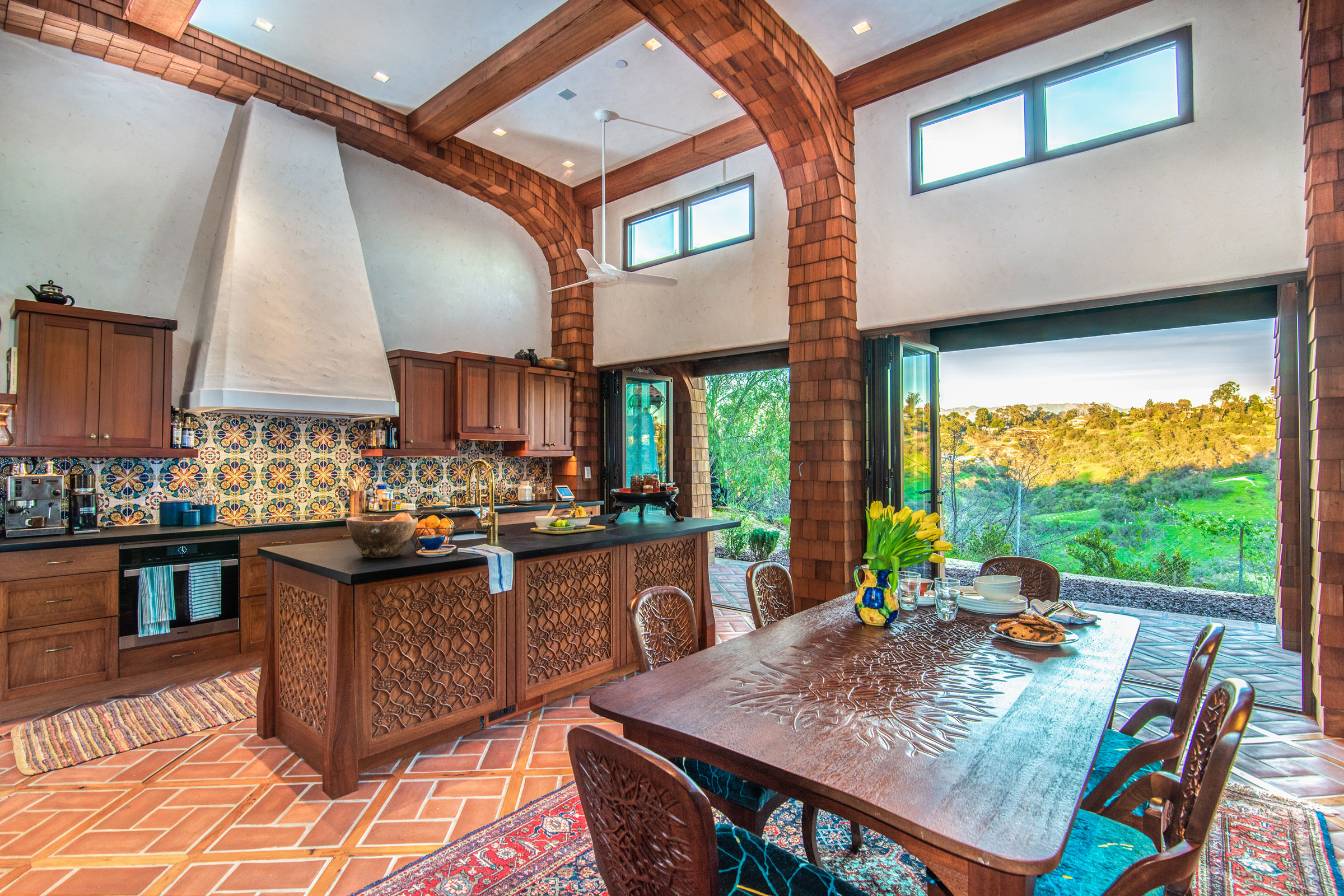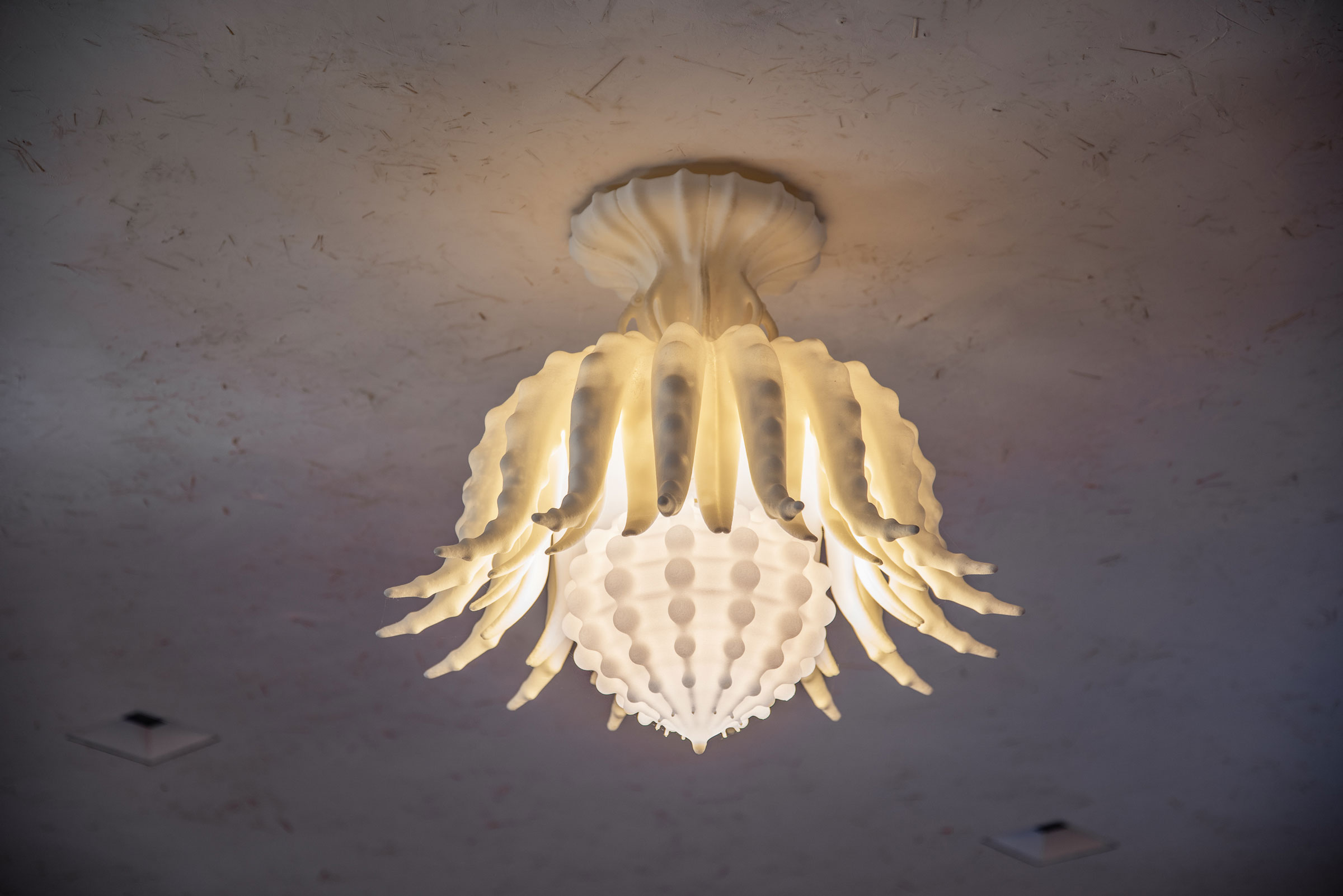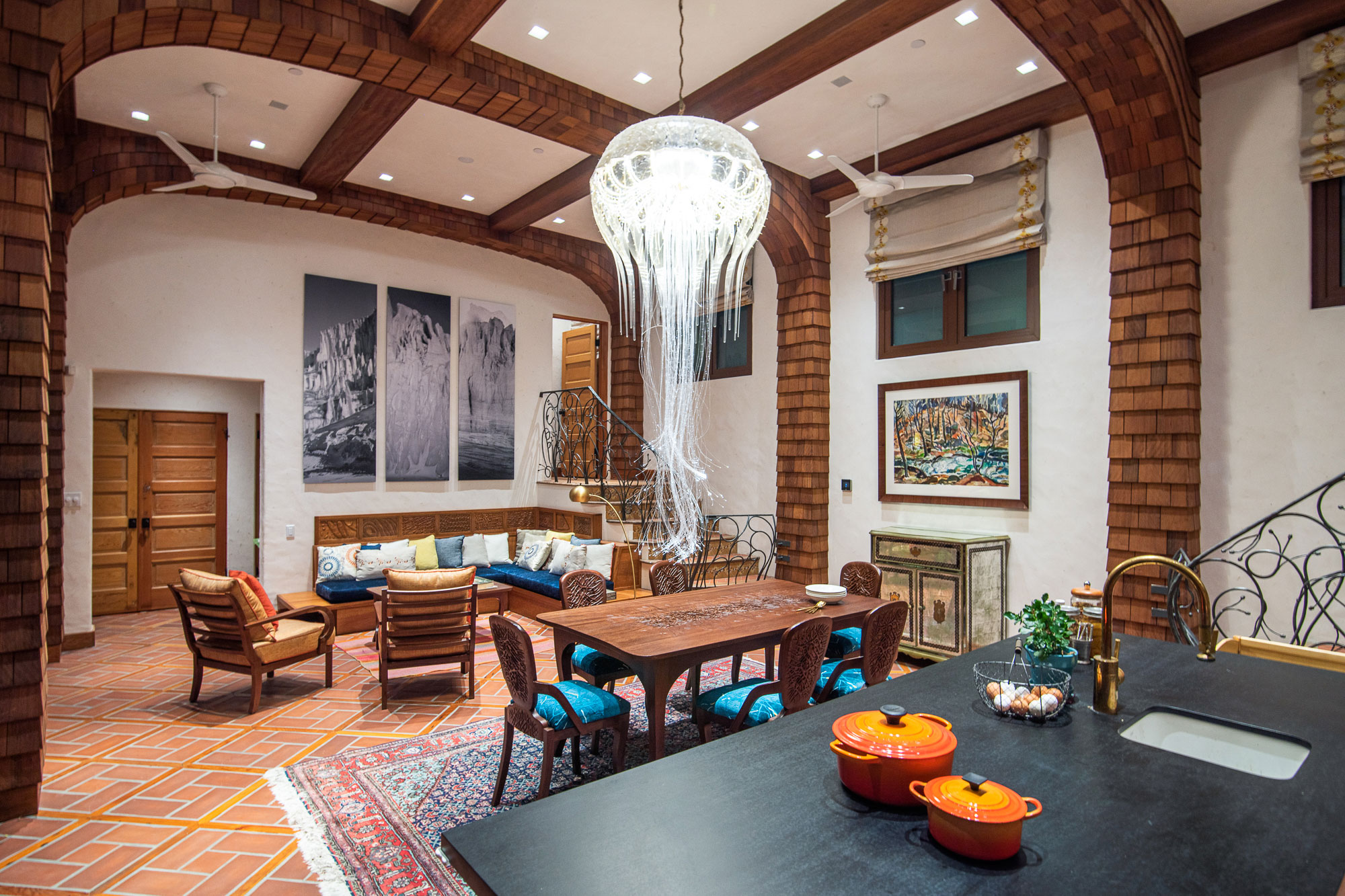Story at a glance:
- Casa Zero was constructed using materials from local demolished homes.
- The home features unexpected, artistic odes to plant, animal, and fungal life.
- Designers carefully measured the home’s embodied carbon.
From paintings of fungi and bacteria on decorative tiles to a jellyfish chandelier hanging over the great room, nature is at every turn inside Casa Zero. Here, poetry and sustainability collide, paving your journey to the chlorophyl-inspired sofa, or perhaps past the fungal spore-shaped railing and to the bedroom for a peaceful sleep.
The home is a proof of concept. It’s the first build that kick-started the initiative that LA- based founder Steve Pallrand calls CarbonShack, and its mission “to offer a way of building for people who care about the footprint of what they do, who want their values to be reflected in the way they live.”
Casa Zero is Pallrand’s personal, all-electric home he shares with wife Rachel Mayeri, an artist, scientist, and professor, and their 4-and-a-half-year-old. Pallrand, also the founder and principal designer at Home Front Build, recognizes that his house, in its particular embrace of the biome, wouldn’t be to everyone’s taste. But that’s part of the point. Pallrand says, “I built this house for myself, which alleviated a lot of problems,” he says. “We could just do those things and enjoy it and take liberties.”
With Casa Zero the CarbonShack team sought to create a new model for green residential design by building contemporary, sustainable homes using materials from nearby houses that were already in the process of demolition. For Home Front Build, Pallrand had been salvaging parts from local California houses for remodels and other projects for clients.
But for CarbonShack, the approach was a little different: a philosophy and practice extending beyond historic preservation, beyond simply renovating older homes. “We didn’t want somebody coming to that website who wanted to live greener and more shared our values who was then turned off because all they saw was historic homes,” Pallrand says.
To create Casa Zero, Pallrand’s team used salvaged materials like redwood from a nearby 1905 Craftsman-style home that had been demolished and built a new home on a 4,853-square-foot lot in the Mt. Washington neighborhood in LA. By reusing these materials for the build, CarbonShackDesign made the embodied carbon footprint an integral aspect of Casa Zero’s story.

Photo courtesy of Nolasco Studios
Pallrand says there isn’t always enough information available to the green consumer about the embodied carbon footprint, and CarbonShackDesign “wanted to put that together in a story to push the boundaries of how far can you go in reducing the building and operational carbon footprint of a residence.” The team even created an embodied energy calculator so consumers can determine the carbon cost of the materials they’re using.
CarbonShack also measured the carbon footprint of the construction. The team framed the entirety of Casa Zero with a Douglas fir salvaged from the demolished 1905 home, saving around 2.75 tons of CO2 emissions. By avoiding standard heating equipment and opting instead to install ceiling fans for heating and a whole house fan for cooling, they calculated that the home would save around .95 tons of energy per year.
CarbonShack built double stud walls for every wall in the home with upwards of 8 inches of insulation, plus loose-fill cellulose covering up any holes in the insulation, which will save around .50 tons of CO2 every year. The solar system on the roof is expected to save just over 3 tons of CO2 per year. The team also included a heat pump hot water heater, another step towards zero net energy in the home.

Photo courtesy of Nolasco Studios
While building, Pallrand started wrestling with how to make the story more visible throughout the space. The challenge became about how to make these undetectable but crucial details about interconnection legible to the eye. He says his wife thought of the solution: art inspired by the microbiome. “The wild is not just out there, but it’s within our bodies; it’s within our houses. Showing that interdependence of our choices with nature was a way to show that how and what we choose to build with, and how we live, has impacts on nature.”
This blurring of boundaries is reflected all throughout the house. Walk up to the entrance and you’ll see a U-shaped Mission-style facade with shingles, “something you’d never see,” traditionally, paired with Spanish Colonial tile and Craftsman framing. Through the hand-carved mycelium door, visitors are greeted to a covered portico, atrium-style, with lots of natural light and adorned with thalamophora lighting fixtures on the ceiling, “making the house permeable to the outside so that when you’re inside, you’re always a part of the outside,” Pallrand says.

Photo courtesy of Nolasco Studios
Pallrand wanted the great room to feel larger than it is. He made it seem more expansive by choosing not to have any doors separating it from the kitchen and installing a medusa chandelier to tie the rooms together.
In particular, the bedrooms have a feeling of rich history and texture to them. In one, the walls and ceilings there are paneled with redwood from an old Northern Californian bridge. And the plastering in the bedrooms is thicker than the plaster elsewhere in the house: created as a mixture of plaster, grass, and straw to aid in carbon sequestration and offer a “grass cloth” feel to the walls.
And while artistic renderings of lesser-appreciated parts of the biome pop up in sconces or in a kitchen island, there’s nowhere the paintings of germs and bacteria seem to flourish more than in the bathroom tiles. One bathroom in particular, designed by his wife, features bacteria colony-inspired tiles that attach to each other to create a feeling that they’re “creeping up and down the wall and splashing up behind the toilet.”
For Pallrand, Casa Zero is an emblem of CarbonShack’s approach to beauty, “expanding the idea of beauty beyond the physical beauty of architecture, to the emotional and value beauty of the way we live.”



